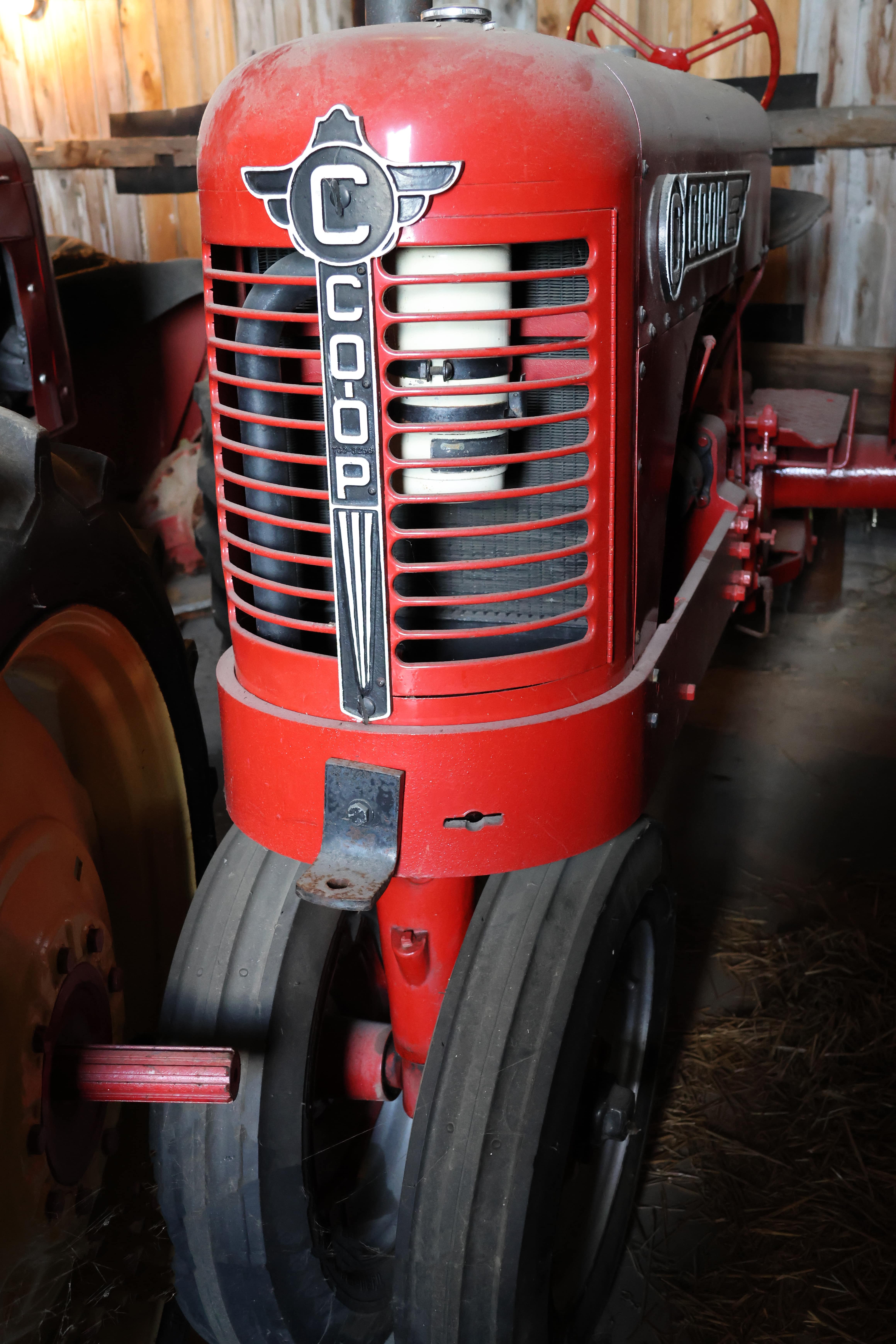Stay Informed
Accumulating Co-ops: Tractor with an Indiana connection prized by collectors
Co-op tractors were first introduced in the 1930s with the goal of producing sturdy and affordable tractors. Perhaps that’s why they still have a special place in the hearts of collectors today. 
For example, Allen Adams, a retired farmer in Wells County, isn’t quite sure how many Co-ops he has because his collection ranges from fully restored machines to partial tractors to planters and other equipment, all factors that make determining the actual number of tractors difficult. But his eventual goal is to have one of every model sold under the Co-op brand – a total of 15 different models, according to the online resource Tractordata.com – as well as every model of Cockshutt tractor.
“I could have bought just one, but it doesn’t quite work out that way,” Adams said.
Tom Bechman, editor of Indiana Prairie Farmer and antique tractor enthusiast, owns only two old tractors, but one of them is a Co-op.
The tractor he remembers best is the Massey-Harris his dad had, but his wife’s family farmed with a Co-op. So, once Bechman had acquired a restored Massey-Harris 44, he started looking around for a Co-op.
“I just like old tractors – that’s what I grew up on,” Bechman said.
Co-ops have a complicated history. The first Co-op-branded tractor came out in 1934-35 and the last one in 1956, according to Hemmings Motor News. Several different manufacturers produced the brand, according to the South Dakota Ag Heritage Museum, including: Duplex Printing Press Company, Michigan; Co-operative Manufacturing, Michigan; Farmers Union Central Exchange, Minnesota; Arthurdale Farm Equipment, West Virginia; and eventually the National Farm Machinery Co-op in Shelbyville, Indiana.
After World War II, Cockshutt Farm Equipment of Canada started selling the Cockshutt Model 30 in the U.S., rebranding it as the Co-op Model E3. Other Cockshutt tractors were later rebranded as Co-ops as well, which is why the two brands and their collectors are generally linked together.

To add to the complications, the tractors also were sold by several different entities, including the Indiana Farm Bureau Cooperative Association, according to an article by Ogden Publications, which produces Farm Collector and Gas Engine magazines.
Adams remembers noticing a Co-op for the first time when he saw a neglected Co-op B2 tucked away in the back of a relative’s damaged barn. A year or two later, the barn burned down, and he figured that was the last he’d ever see of that tractor. When it turned out the tractor had been saved from the fire, he bought it and a spare engine for $650.
“It looked sad,” he said, but it turned out to be fixable. “Now it runs like a ribbon,” he added.
“That’s what got me started,” he said. Another attraction of the Co-ops, he added, is the reliability of the old Chrysler engines that were in many Co-op models.
Most of Bechman’s tractor collection consists of toy tractors since he doesn’t have room on his 3 acres for many full-size tractors. But he does treasure his 1948 Co-op E3, which was restored by students in the ag mechanics program at Delphi High School. The program restores five or six tractors every year under the guidance of ag teacher Doug Walker. It needed a lot of work, but eventually they got it to prime condition.
“It’s been kind of cool,” Bechman added.
While Bechman hasn’t taken either of his tractors to shows, Adams gets out to shows regularly. It used to be something he and his late wife, Colleen, did together. In fact, Colleen had her own tractor, a Cockshutt 20. But Adams said he still takes his Co-ops and Cockshutts to shows.
“I go as often as I can get by with it,” he said.




